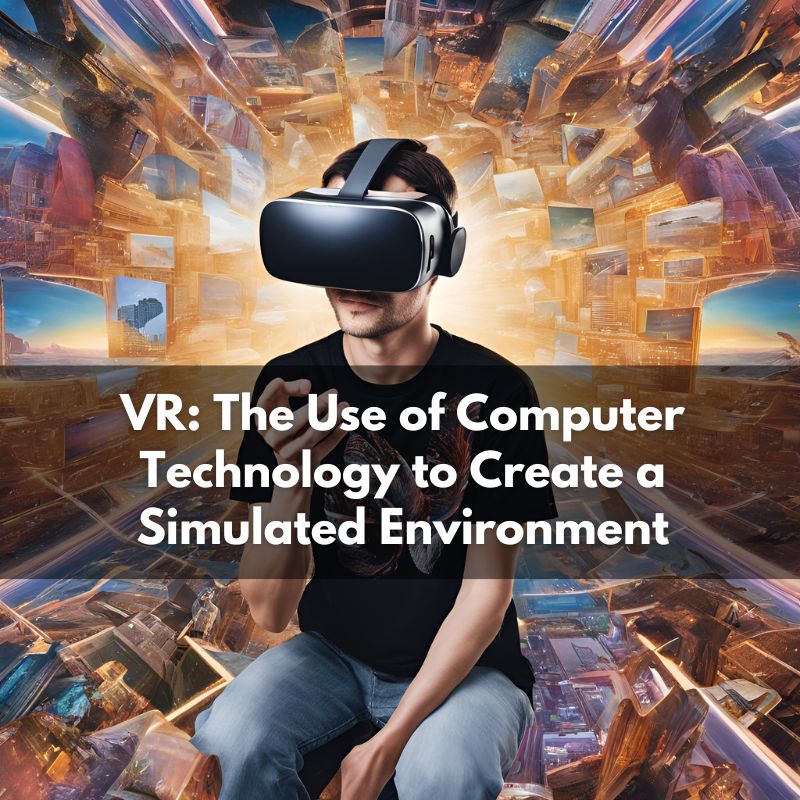
Virtual Reality (VR) is transforming the way we interact with digital content by creating immersive, simulated environments that replicate the real world or introduce entirely new experiences. By leveraging advanced computer technology, VR enables users to engage with virtual environments in a highly interactive and realistic manner. This article delves into the key aspects of VR, its applications, and how it is reshaping various industries.
What is Virtual Reality?
Virtual Reality (VR) refers to a technology that uses computer-generated simulations to create a three-dimensional, interactive environment that users can explore and interact with. VR typically involves the use of specialized hardware, such as headsets and controllers, to provide a fully immersive experience. Users can engage with these simulated environments in a way that feels real, despite being entirely virtual.
Key Components of VR:
- Headsets: VR headsets are wearable devices that display the virtual environment directly in front of the user’s eyes. These headsets often include built-in sensors to track head movements and adjust the view accordingly.
- Controllers: VR controllers allow users to interact with the virtual environment. These devices can track hand movements and enable users to manipulate objects, navigate menus, and engage in various activities within the simulation.
- Software: The software that powers VR experiences includes the applications and games that create and manage the virtual environments. This software uses complex algorithms to render realistic graphics and simulate interactions.
Learn more about the technology behind VR and its impact on various sectors at News Gutter.
Applications of VR
Virtual Reality has a wide range of applications across different industries. Here are some of the most notable uses:
- Entertainment and Gaming
- Immersive Gaming: VR has revolutionized the gaming industry by providing highly immersive and interactive experiences. Players can explore virtual worlds, engage in realistic combat, and interact with other players in ways that were previously impossible.
- Virtual Concerts and Events: VR allows users to attend live events and concerts from the comfort of their homes, offering a sense of presence and engagement that traditional streaming cannot match.
- Education and Training
- Simulated Learning Environments: VR can create virtual classrooms and training scenarios for various fields, including medicine, engineering, and aviation. This allows students and professionals to practice skills and gain experience in a controlled, risk-free environment.
- Historical and Cultural Experiences: VR can transport users to historical events or cultural landmarks, providing educational experiences that are both engaging and informative.
- Healthcare
- Therapy and Rehabilitation: VR is used in therapeutic settings to treat phobias, post-traumatic stress disorder (PTSD), and other mental health conditions. It provides a controlled environment where patients can confront and manage their fears or practice coping strategies.
- Surgical Training: Surgeons can use VR simulations to practice and refine their skills before performing complex procedures. This hands-on training enhances precision and confidence.
- Real Estate and Architecture
- Virtual Tours: VR allows potential buyers or clients to take virtual tours of properties and architectural designs. This immersive experience helps in making informed decisions without physically visiting the location.
- Design Visualization: Architects and designers can use VR to visualize and modify building designs in real-time, improving collaboration and client communication.
- Retail and E-Commerce
- Virtual Shopping Experiences: Retailers are exploring VR to create virtual stores where customers can browse and interact with products as if they were in a physical store. This innovation enhances the online shopping experience and can lead to increased sales.
Explore more about how VR is transforming industries and enhancing experiences at News Gutter.
The Future of VR
The future of Virtual Reality holds exciting possibilities as technology continues to advance. Key areas of development include:
- Enhanced Graphics and Realism: Ongoing improvements in graphics technology will lead to more realistic and visually stunning virtual environments.
- Increased Accessibility: As VR hardware becomes more affordable, it will become accessible to a broader audience, leading to widespread adoption and new applications.
- Integration with Other Technologies: VR is likely to be integrated with other emerging technologies, such as Augmented Reality (AR) and Artificial Intelligence (AI), to create even more immersive and interactive experiences.
Conclusion
Virtual Reality represents a groundbreaking use of computer technology to create immersive, simulated environments that enhance entertainment, education, healthcare, and more. By understanding the fundamentals of VR and exploring its diverse applications, you can appreciate the profound impact it has on various industries. As technology continues to evolve, VR will undoubtedly play a pivotal role in shaping the future of human experiences. For the latest updates and insights into VR and other technological advancements, visit News Gutter.
